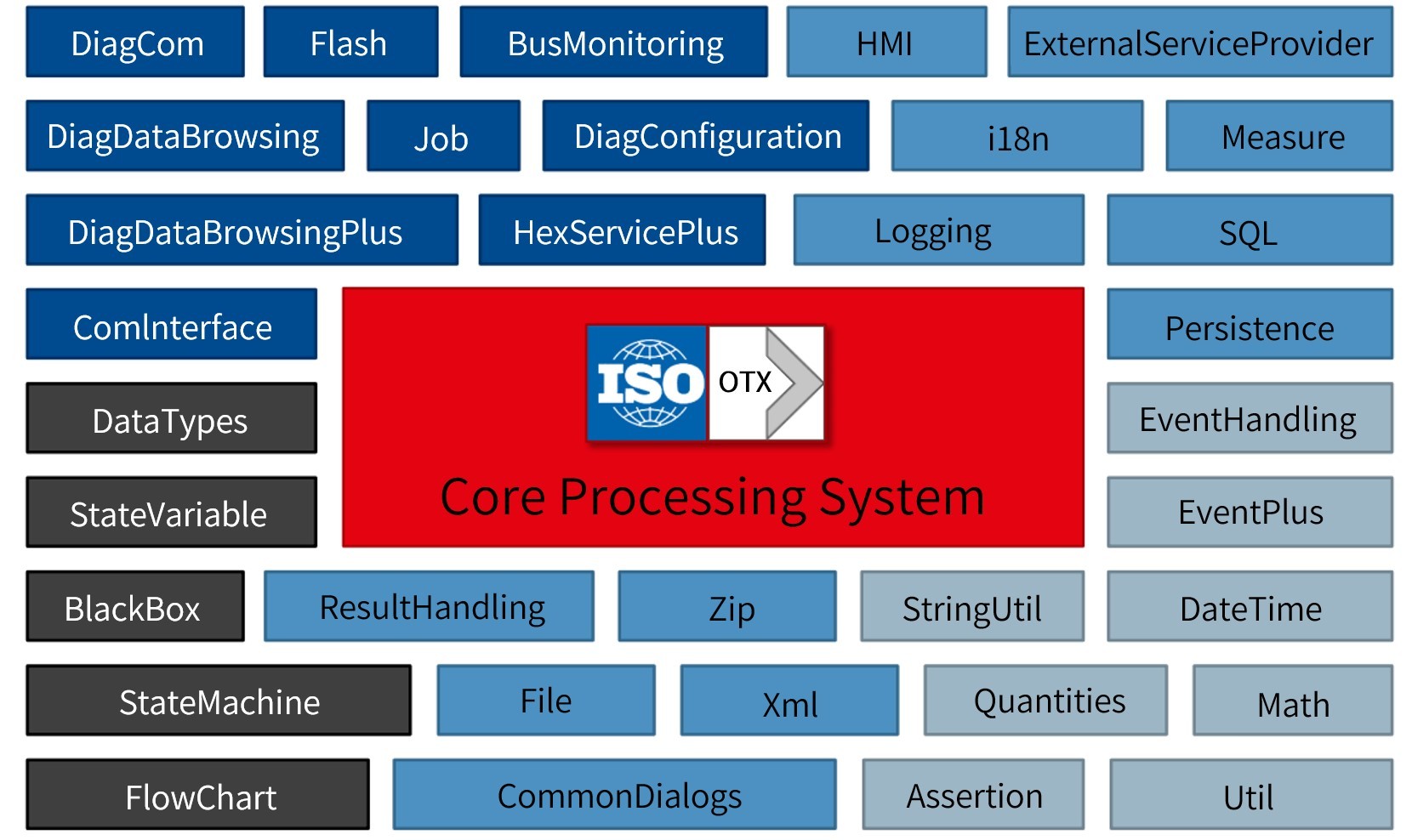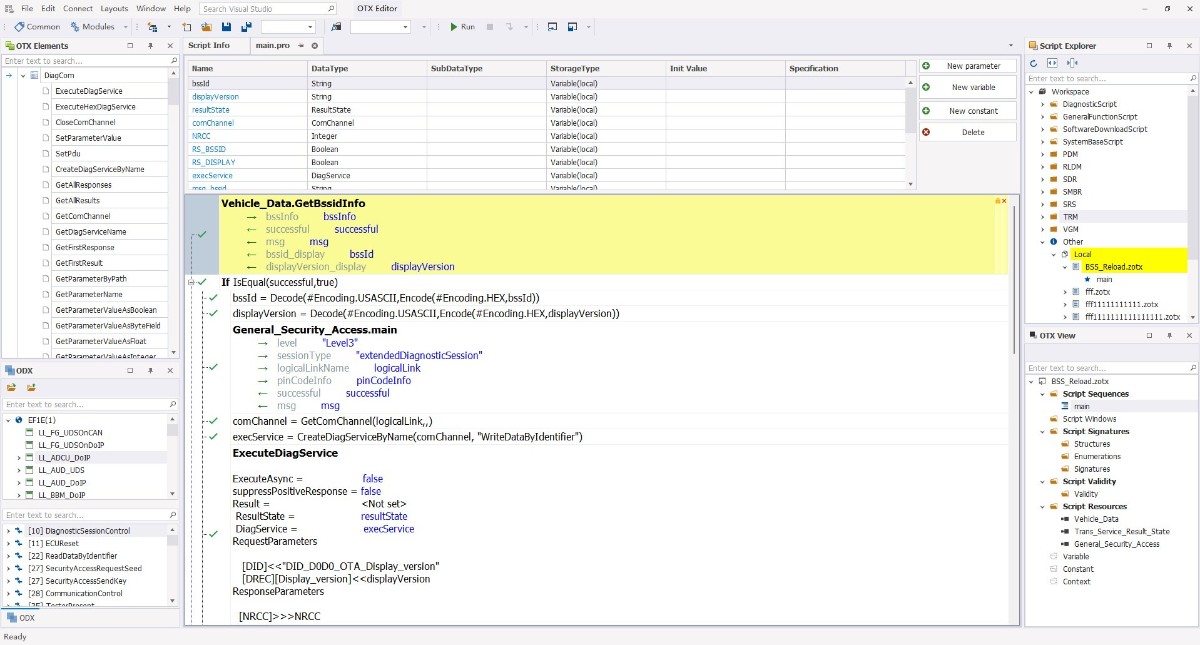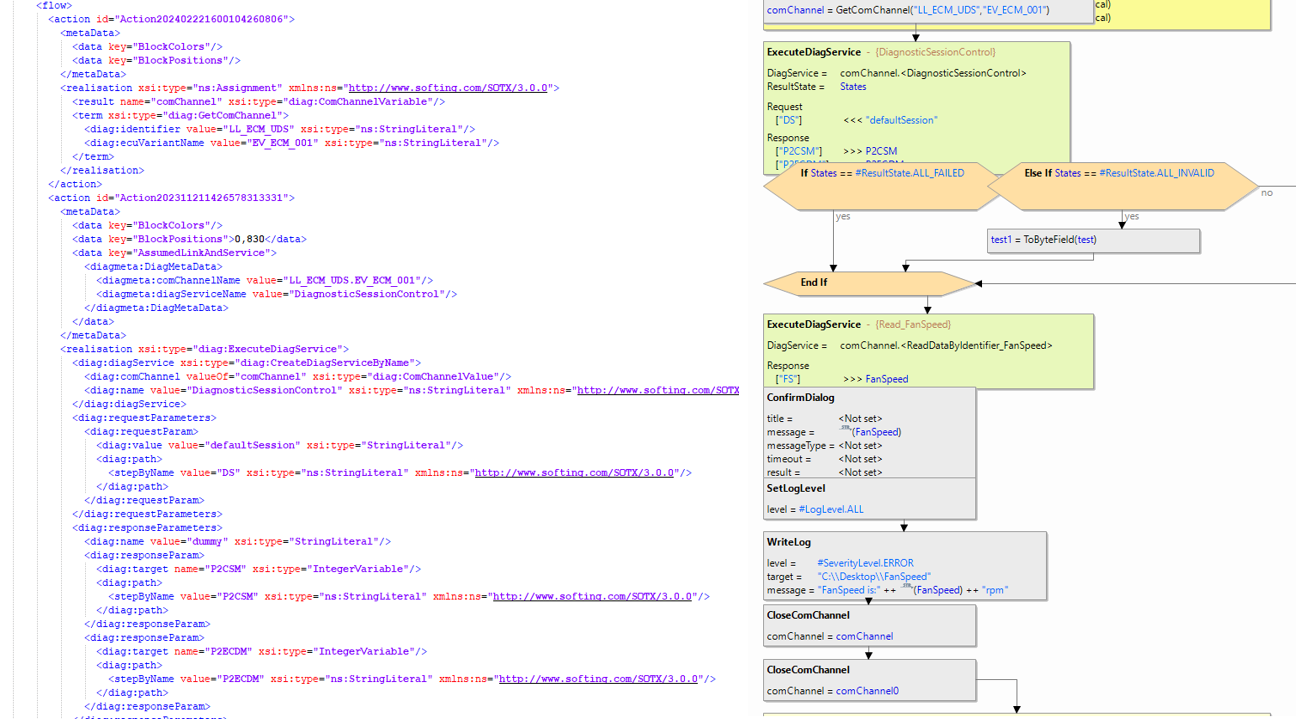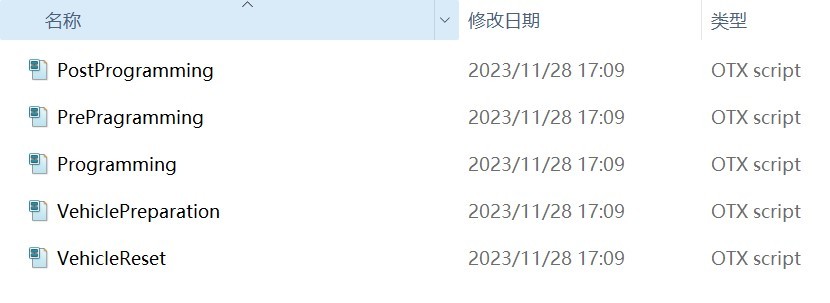
Contribute to standardized diagnostic development | Implementation of EOL sequences based on ISO 13209 (OTX)
I. What is OTX?
OTX, full name Open Test sequence eXchange format, that is, the open test sequence exchange format, international standard: ISO 13209, is specifically for the automotive industry to develop sequence development standards. It is widely used in vehicle diagnostics, automation calibration and ECU testing, etc. OTX is not only able to develop diagnostic sequences, but also a programming language similar to C Language, only optimized for the automotive industry so that diagnostic engineers can use it!

Among these:
• ISO 13209-Part 1, Overview.
• ISO 13209-Part 2, Core elements,Define assignments, Variables, Math instructions, Loops, Branches, etc.
• ISO13209-Part 3, Standard extensions, Define diagnostics, Flashing, HMI dialogs, i18n multilanguage, and more.
• ISO13209-Part 4 & Part 5, Interface definition.

II. Why choose OTX?
As we all know, test sequences are an important part of the vehicle diagnostic lifecycle. Not only it needs to be considered as a single-use channel, but it also needs to take into account multi-language functionality and multi-application scenarios, as well as adapting to multi-targeted system tools (test benches, production line systems, and after-sales diagnostic tools, etc.).
Before the advent of OTX, we were using different formatted text languages for test sequence descriptions, which were subsequently edited and processed for final execution according to different target systems.

After the ODX and MVCI architecture definitions were widely used, we found that standardizing diagnostic data can greatly reduce tool development and iterative model development, thus saving significant economic and labor costs and ensuring data homogenization.
OTX supports ODX calls for vehicle diagnostic sequences.

(OTX definitional distinctions)
III. How do you implement an EOL sequence via OTX?
The test sequence is edited by Q-Studio, a professional OTX editing tool, which is part of the diagnostic tool set and not only supports the relevant function definitions in ISO 13209, but also supports data interaction with the ODX diagnostic database, thus realizing the process of interfacing diagnostic and test processes.
Q-Studio allows us to create EOL sequences. There are a large number of sequences in EOL, from dozens to hundreds, depending on the actual development needs of the current model.

Typically, test scripts are written in programming languages such as C++, Java, etc. Using OTX, it is possible to edit scripts graphically. Here is an example of a real test case written in Q-Studio:

The comparison shows that the script process processing written with Q-Studio tends to be visual, simple and belongs to the graphical programming language.
Diagnostic database definitions and related call functions can be added directly by dragging and dropping them in the editing window, thus making it more suitable for diagnostic development engineers.

With the test sequences edited by Q-Studio, we can connect to virtual vehicles directly within the software to conduct tests. After the tests are validated, they are distributed to test, production and after-sales departments to support ODX/OTX related tools, which can be used directly, such as Q-Tester.Expert, Q-Tester.Workshop and third-party tools.
